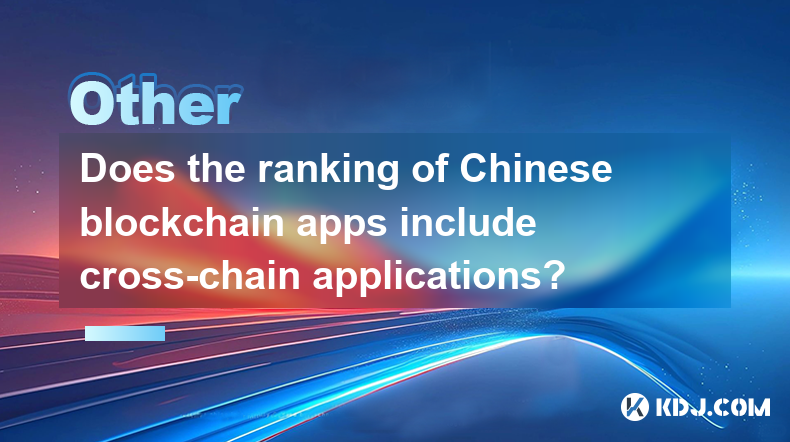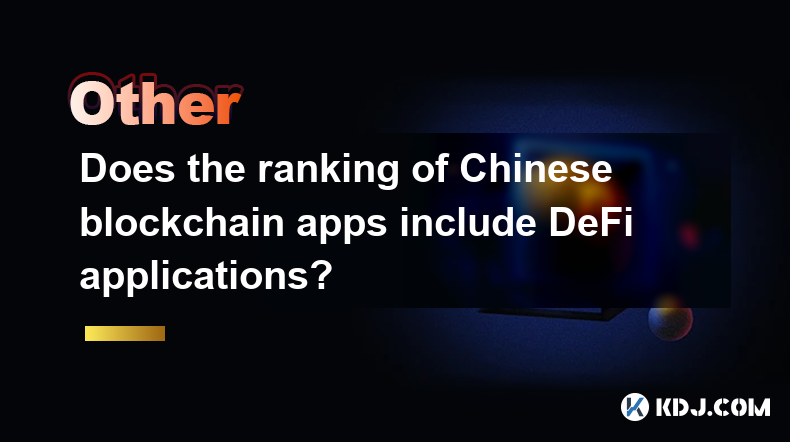-
 Bitcoin
Bitcoin $85,181.4576
0.55% -
 Ethereum
Ethereum $1,600.7372
0.98% -
 Tether USDt
Tether USDt $0.9999
0.01% -
 XRP
XRP $2.0883
0.92% -
 BNB
BNB $592.4828
0.74% -
 Solana
Solana $138.7084
2.67% -
 USDC
USDC $0.9999
0.00% -
 Dogecoin
Dogecoin $0.1590
2.50% -
 TRON
TRON $0.2418
-1.18% -
 Cardano
Cardano $0.6301
2.59% -
 UNUS SED LEO
UNUS SED LEO $9.3588
1.36% -
 Chainlink
Chainlink $12.8630
1.65% -
 Avalanche
Avalanche $19.5072
1.68% -
 Stellar
Stellar $0.2468
2.21% -
 Toncoin
Toncoin $2.9911
-0.01% -
 Shiba Inu
Shiba Inu $0.0...01220
2.08% -
 Hedera
Hedera $0.1663
0.29% -
 Sui
Sui $2.1506
1.41% -
 Bitcoin Cash
Bitcoin Cash $338.3770
2.53% -
 Hyperliquid
Hyperliquid $18.1017
6.61% -
 Polkadot
Polkadot $3.7270
1.24% -
 Litecoin
Litecoin $76.2040
0.93% -
 Dai
Dai $1.0000
0.02% -
 Bitget Token
Bitget Token $4.4577
2.21% -
 Ethena USDe
Ethena USDe $0.9992
0.02% -
 Pi
Pi $0.6468
6.09% -
 Monero
Monero $212.8810
-1.80% -
 Uniswap
Uniswap $5.2693
1.19% -
 Pepe
Pepe $0.0...07270
1.33% -
 OKB
OKB $50.7701
1.10%
How is the encryption technology of blockchain applied?
Blockchain security relies on cryptographic hashing for data integrity, asymmetric encryption for transaction security, and consensus mechanisms like Proof-of-Work for network validation, protecting against attacks and enabling secure smart contracts.
Mar 11, 2025 at 06:01 am

Key Points:
- Blockchain's cryptographic foundation relies on hashing algorithms and asymmetric encryption.
- Hashing ensures data integrity and immutability.
- Asymmetric encryption secures transactions and user identities.
- Consensus mechanisms, like Proof-of-Work, utilize cryptography for security.
- Smart contracts leverage cryptography for automated and secure execution.
- Cryptographic techniques protect against various attacks, maintaining blockchain security.
How is the encryption technology of blockchain applied?
Blockchain technology's security and functionality are deeply intertwined with cryptography. It's not a single encryption method, but a sophisticated interplay of several techniques working together. Understanding these techniques is crucial to grasping the underlying security of the blockchain.
The cornerstone of blockchain security is cryptographic hashing. Hashing algorithms take an input (a block of data) and produce a unique, fixed-size string of characters, called a hash. Even a tiny change in the input drastically alters the hash. This property ensures data integrity – any tampering with the data will be immediately detectable because the hash will change. This is fundamental to the immutability of blockchain.
Another crucial aspect is asymmetric encryption, also known as public-key cryptography. Each user possesses a pair of keys: a public key and a private key. The public key is shared openly, while the private key remains secret. Transactions are digitally signed using the private key. Anyone can verify the signature using the public key, proving the transaction's authenticity and preventing unauthorized modifications. This is how blockchain ensures that only the rightful owner can spend their cryptocurrency.
The consensus mechanisms employed by different blockchains heavily rely on cryptography. For example, Proof-of-Work (PoW) blockchains, like Bitcoin, utilize cryptographic hashing to solve complex computational problems. The first miner to solve the problem adds the next block to the chain, and their effort is cryptographically verified by the network. This ensures that adding fraudulent blocks is computationally infeasible. Other consensus mechanisms, like Proof-of-Stake (PoS), also employ cryptography for verification and security, albeit in different ways.
Smart Contracts and Cryptography:
Smart contracts, self-executing contracts with the terms of the agreement directly written into code, are another area where cryptography plays a vital role. They leverage cryptographic techniques to ensure secure and automated execution of agreements. The code itself is cryptographically secured, preventing unauthorized alterations. The execution of the contract is based on predefined conditions, and the outcome is cryptographically verifiable.
Protection Against Attacks:
The cryptographic techniques used in blockchain provide robust protection against various attacks.
- 51% Attacks: While theoretically possible, the computational power required to perform a 51% attack on a large, established blockchain is astronomically high, making it highly improbable. The difficulty of the cryptographic puzzles in PoW systems increases with the network's size, making attacks increasingly difficult.
- Double-Spending Attacks: The cryptographic hashing and consensus mechanisms prevent double-spending, where a user attempts to spend the same cryptocurrency twice. The cryptographic signatures ensure that transactions are unique and verifiable, making double-spending nearly impossible.
- Sybil Attacks: These attacks involve creating numerous fake identities to manipulate the network. Cryptographic techniques, including robust identity verification mechanisms, help mitigate the risk of Sybil attacks.
How does blockchain cryptography ensure data integrity?
Blockchain uses cryptographic hashing to ensure data integrity. Each block contains a hash of the previous block, creating a chain of linked blocks. Any alteration to a block will change its hash, breaking the chain and making the alteration immediately apparent. This chain of hashes acts as a tamper-evident record.
How does public-key cryptography secure transactions?
Public-key cryptography enables secure transactions by using a pair of keys: a public key and a private key. The public key is used to verify the digital signature on a transaction, confirming its authenticity, while the private key is used to create the signature, proving ownership. Only the owner of the private key can sign transactions, preventing unauthorized spending.
What are the different consensus mechanisms and their cryptographic aspects?
Various consensus mechanisms exist, each with its cryptographic underpinnings. PoW relies on cryptographic hashing to solve complex computational problems, securing the blockchain through computational effort. PoS uses cryptographic signatures and staking to validate transactions, emphasizing stake rather than computational power. Other mechanisms, like Delegated Proof-of-Stake (DPoS) and Practical Byzantine Fault Tolerance (PBFT), also employ cryptographic techniques to reach consensus and secure the network.
How does cryptography protect against various attacks on blockchain?
Cryptography provides several layers of protection. Hashing ensures data integrity, making alterations detectable. Asymmetric encryption secures transactions and prevents unauthorized access. Consensus mechanisms, using cryptography, make it computationally expensive or impossible to manipulate the blockchain. These layers work together to make blockchain systems highly resilient to attacks.
What role does cryptography play in smart contracts?
Cryptography is integral to smart contracts. The code itself is often stored and executed in a cryptographically secure environment. Transactions triggering smart contracts are cryptographically verified, ensuring only authorized actions are executed. The outcomes of smart contract executions are cryptographically verifiable, guaranteeing transparency and trust.
Disclaimer:info@kdj.com
The information provided is not trading advice. kdj.com does not assume any responsibility for any investments made based on the information provided in this article. Cryptocurrencies are highly volatile and it is highly recommended that you invest with caution after thorough research!
If you believe that the content used on this website infringes your copyright, please contact us immediately (info@kdj.com) and we will delete it promptly.
- SUI Stuck in No Man's Land as Bitcoin Dominance Rises
- 2025-04-19 16:20:13
- MoonPay CEO Calls on US Lawmakers to Leave a Path Open to State-Level Regulators When Passing Legislation on Stablecoins
- 2025-04-19 16:20:13
- XploraDEX's $XPL Token Presale Enters Final Phase as FOMO Reaches Boiling Point
- 2025-04-19 16:15:13
- Mjpru Result 2025: Mahatma Jyotiba Phule Rohilkhand University Declared the Last SEMESTER Exam Results
- 2025-04-19 16:15:13
- The DeFi Education Fund (DEF) Submitted a Letter to the SEC Proposing Five Core Principles for Creating a "Token Safe Harbor" Framework
- 2025-04-19 16:10:13
- King Charles III's Easter message from Durham Cathedral fails to honour the Christian essence of Holy Week
- 2025-04-19 16:10:13
Related knowledge

Can ICOs in the blockchain space still make money?
Apr 17,2025 at 08:29pm
The landscape of Initial Coin Offerings (ICOs) in the blockchain space has evolved significantly since their peak in 2017 and 2018. Despite the increased regulatory scrutiny and the rise of alternative fundraising methods like Security Token Offerings (STOs) and Initial Exchange Offerings (IEOs), ICOs can still be a viable way to raise funds and generat...

Can the application of blockchain in supply chain finance bring benefits?
Apr 15,2025 at 04:00pm
Can the application of blockchain in supply chain finance bring benefits? The integration of blockchain technology into supply chain finance has garnered significant attention in the cryptocurrency and financial sectors. This article explores how blockchain can potentially revolutionize supply chain finance, detailing its benefits and providing a compre...

Does the ranking of Chinese blockchain apps include cross-chain applications?
Apr 14,2025 at 04:00pm
The ranking of Chinese blockchain apps is a comprehensive evaluation that takes into account various aspects such as user base, transaction volume, and technological innovation. A pertinent question arises regarding whether these rankings include cross-chain applications. Cross-chain applications, which allow different blockchain networks to interact an...

Does the ranking of Chinese blockchain apps include DeFi applications?
Apr 15,2025 at 06:57am
The ranking of Chinese blockchain apps is a comprehensive list that showcases the most popular and influential applications within the cryptocurrency ecosystem. One question that often arises is whether these rankings include DeFi applications. To answer this, we need to delve into the specifics of how these rankings are compiled and what types of appli...

Does the ranking of Chinese blockchain apps include educational apps?
Apr 16,2025 at 03:35am
The ranking of Chinese blockchain apps often includes a variety of categories, from finance and gaming to social networking and beyond. One question that frequently arises is whether these rankings include educational apps. To address this, we need to delve into the specifics of how blockchain apps are categorized and ranked in China, and whether educat...

Does the ranking of Chinese blockchain apps include enterprise-level applications?
Apr 15,2025 at 06:42am
The ranking of Chinese blockchain apps often includes a variety of applications, ranging from consumer-focused to enterprise-level solutions. Understanding the scope and criteria for these rankings is essential to determine if enterprise-level applications are included. This article delves into the specifics of how Chinese blockchain app rankings are co...

Can ICOs in the blockchain space still make money?
Apr 17,2025 at 08:29pm
The landscape of Initial Coin Offerings (ICOs) in the blockchain space has evolved significantly since their peak in 2017 and 2018. Despite the increased regulatory scrutiny and the rise of alternative fundraising methods like Security Token Offerings (STOs) and Initial Exchange Offerings (IEOs), ICOs can still be a viable way to raise funds and generat...

Can the application of blockchain in supply chain finance bring benefits?
Apr 15,2025 at 04:00pm
Can the application of blockchain in supply chain finance bring benefits? The integration of blockchain technology into supply chain finance has garnered significant attention in the cryptocurrency and financial sectors. This article explores how blockchain can potentially revolutionize supply chain finance, detailing its benefits and providing a compre...

Does the ranking of Chinese blockchain apps include cross-chain applications?
Apr 14,2025 at 04:00pm
The ranking of Chinese blockchain apps is a comprehensive evaluation that takes into account various aspects such as user base, transaction volume, and technological innovation. A pertinent question arises regarding whether these rankings include cross-chain applications. Cross-chain applications, which allow different blockchain networks to interact an...

Does the ranking of Chinese blockchain apps include DeFi applications?
Apr 15,2025 at 06:57am
The ranking of Chinese blockchain apps is a comprehensive list that showcases the most popular and influential applications within the cryptocurrency ecosystem. One question that often arises is whether these rankings include DeFi applications. To answer this, we need to delve into the specifics of how these rankings are compiled and what types of appli...

Does the ranking of Chinese blockchain apps include educational apps?
Apr 16,2025 at 03:35am
The ranking of Chinese blockchain apps often includes a variety of categories, from finance and gaming to social networking and beyond. One question that frequently arises is whether these rankings include educational apps. To address this, we need to delve into the specifics of how blockchain apps are categorized and ranked in China, and whether educat...

Does the ranking of Chinese blockchain apps include enterprise-level applications?
Apr 15,2025 at 06:42am
The ranking of Chinese blockchain apps often includes a variety of applications, ranging from consumer-focused to enterprise-level solutions. Understanding the scope and criteria for these rankings is essential to determine if enterprise-level applications are included. This article delves into the specifics of how Chinese blockchain app rankings are co...
See all articles
























































































